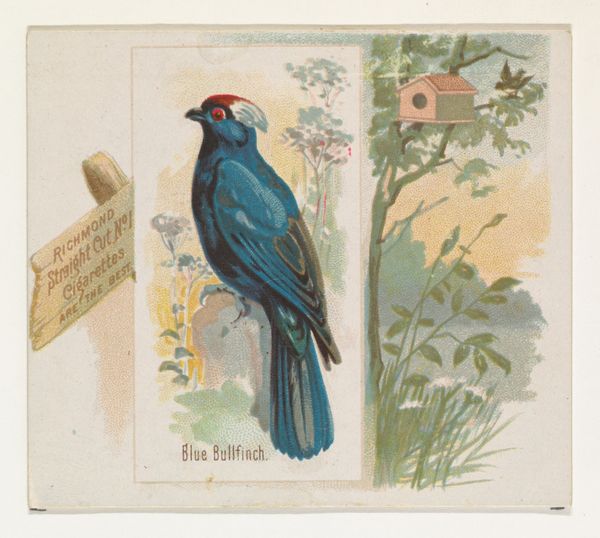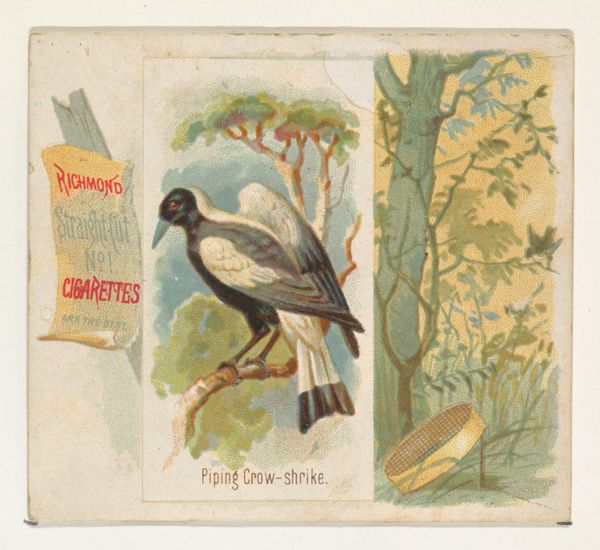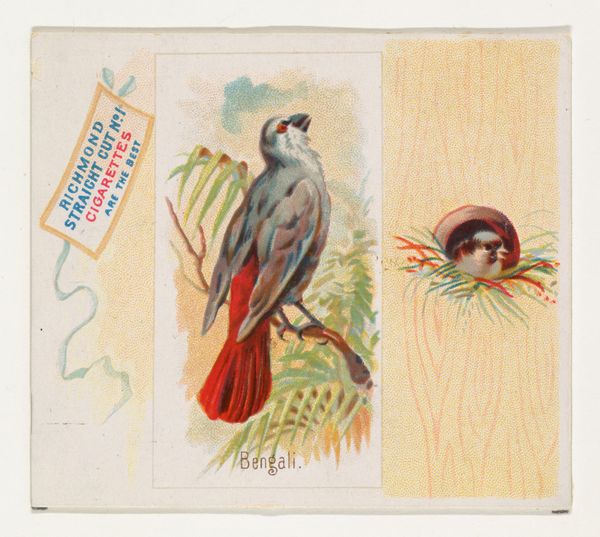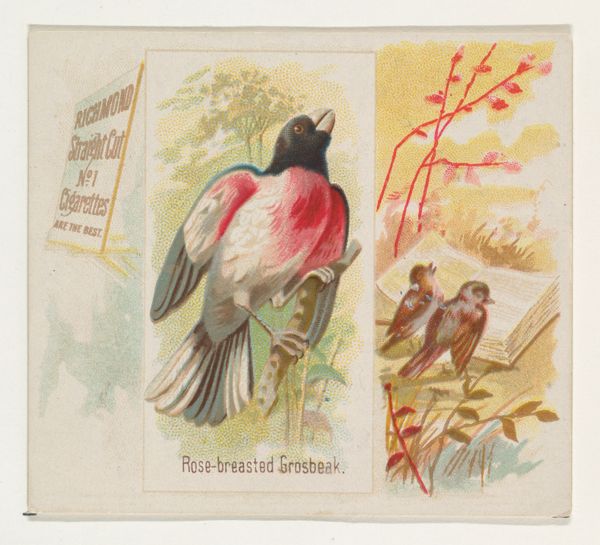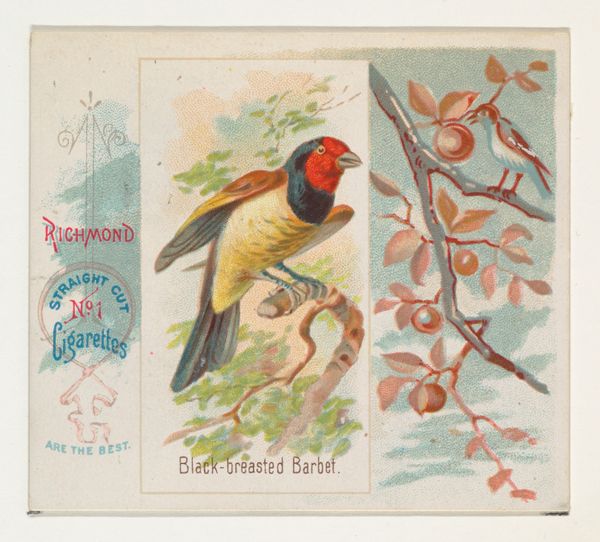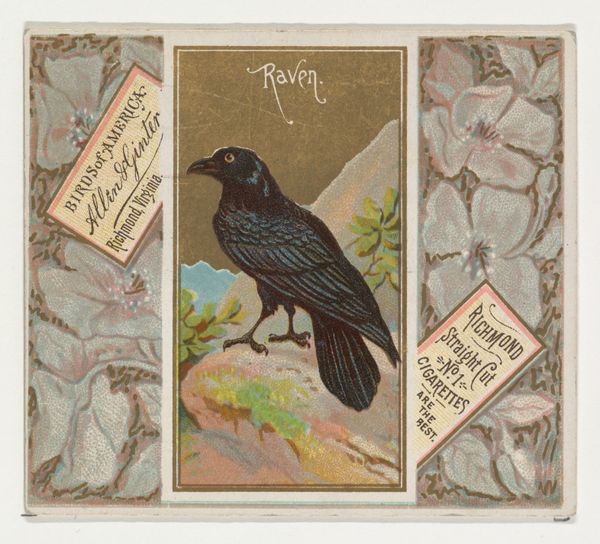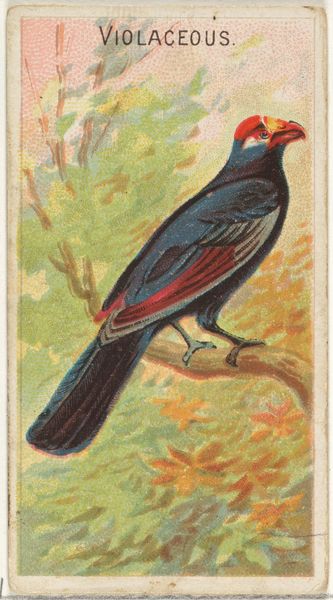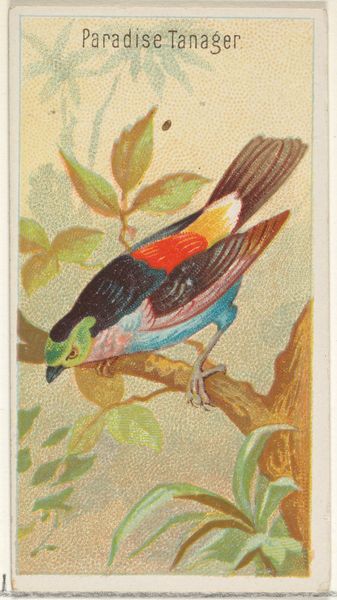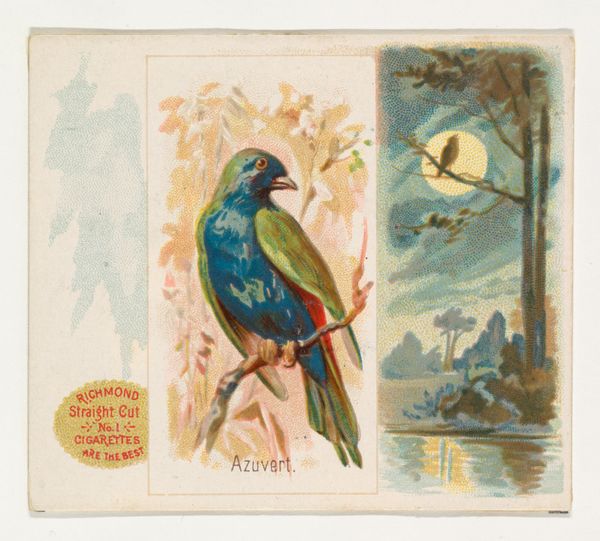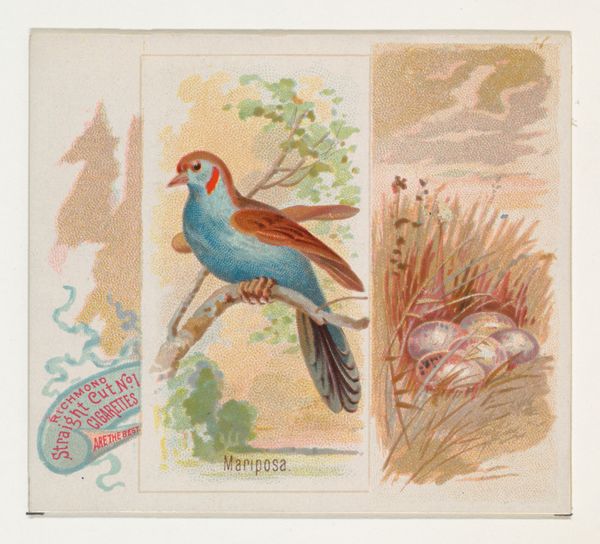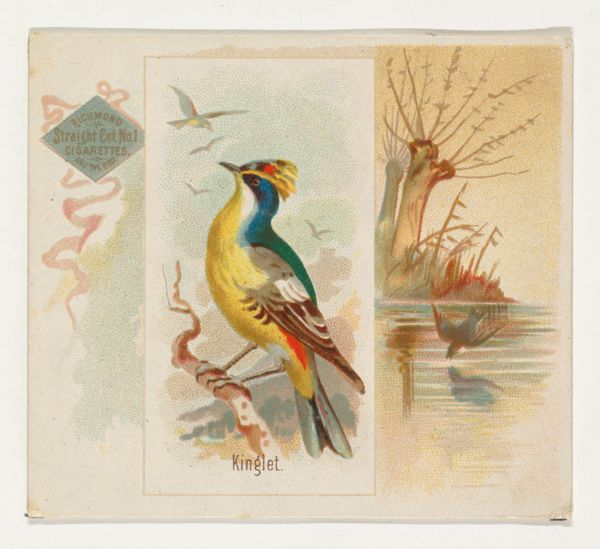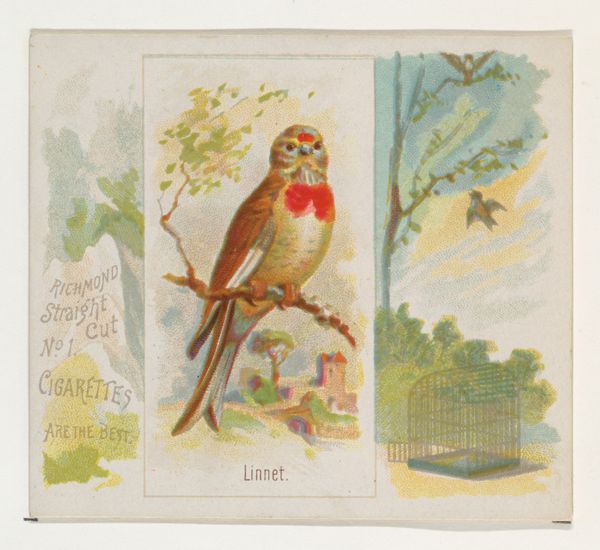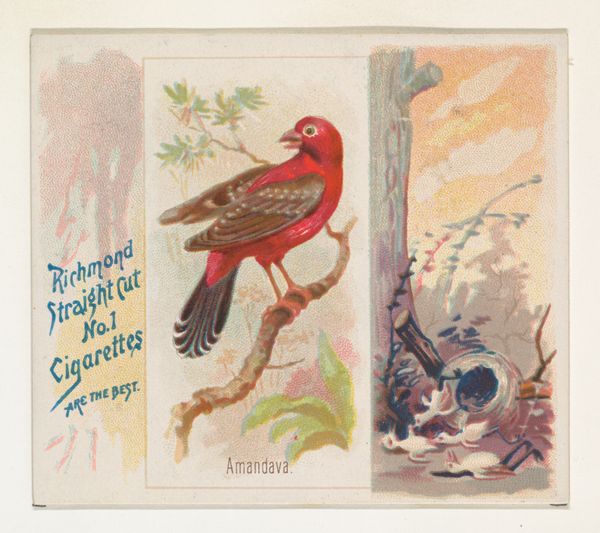
Woodpecker, from the Birds of America series (N37) for Allen & Ginter Cigarettes 1888
0:00
0:00
Dimensions: Sheet: 2 7/8 x 3 1/4 in. (7.3 x 8.3 cm)
Copyright: Public Domain
Curator: This is a fascinating example of late 19th-century commercial art. Specifically, "Woodpecker, from the Birds of America series" printed circa 1888 by Allen & Ginter, a cigarette company. It employs drawing, watercolor and print techniques. Editor: My first impression is quite charming. The depiction is striking with the bird's red head as a stark focus. It almost feels like a small, precious icon despite the mass-produced nature. Curator: Exactly! Think about the implications here. This card accompanied cigarettes—an everyday commodity, even an addiction. The watercolor, print and drawing processes used had to be efficient for mass production but tried to give off the sensibility of art nouveau design. Editor: The red-headed woodpecker perched amidst stylized foliage definitely recalls ukiyo-e prints in the asymmetrical arrangement and flattened perspective. And consider that the red head and plumage, framed within borders of flowers and text, give the Woodpecker almost heraldic visual status. This humble bird attains significance in the visual hierarchy through careful composition. Curator: And the use of color! That intense red functions both to realistically depict the bird and also as an appealing advertisement that is placed amongst text for tobacco. Allen & Ginter's clever strategy conflates consumerism with the allure of art and nature. This blurs the line between mass-produced collectible and artistic creation. Editor: It speaks volumes about cultural values at the time—equating consumption with high culture. And let's consider the implicit messages: strength, vitality, natural beauty embodied both in the product—cigarettes—and the subject of the image, the noble bird. Curator: The card showcases how production elevated and circulated this type of design, blurring the line between commercial interests and aesthetics, but with cost-effective labor and production as priorities. Editor: A simple image reveals layered symbolic meanings related to nature, commerce, and the aspirations of its consumers. Curator: Thank you for helping to expose the intricacies. I hope our listeners now have a greater appreciation for how commodity culture reveals a lot. Editor: Indeed. Seeing beneath the surface shows how objects become meaningful within intricate systems.
Comments
No comments
Be the first to comment and join the conversation on the ultimate creative platform.
